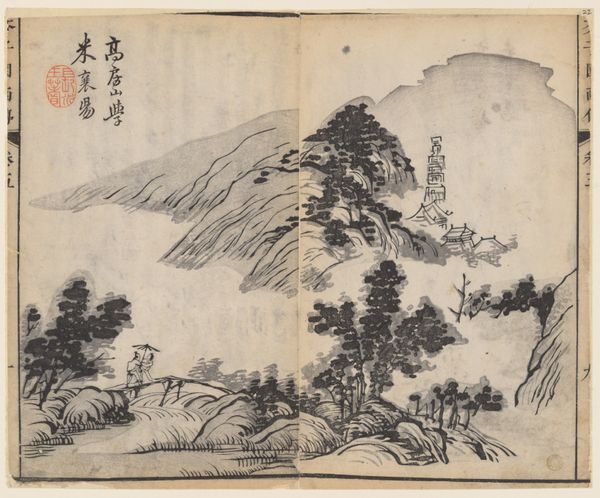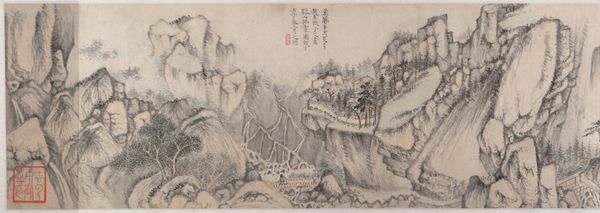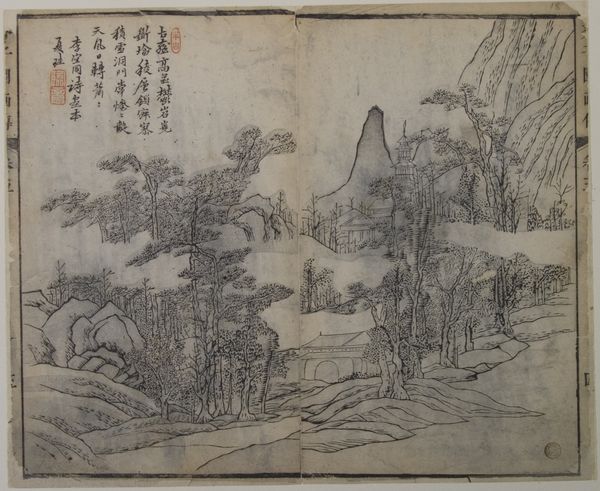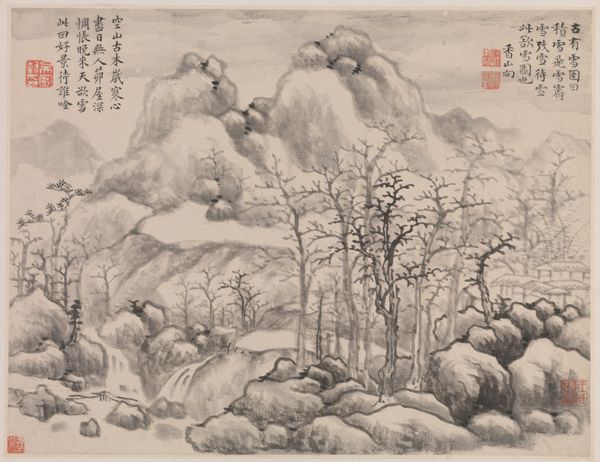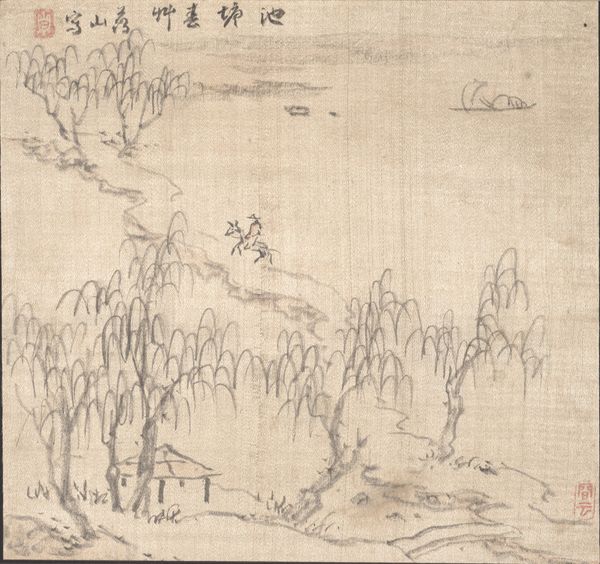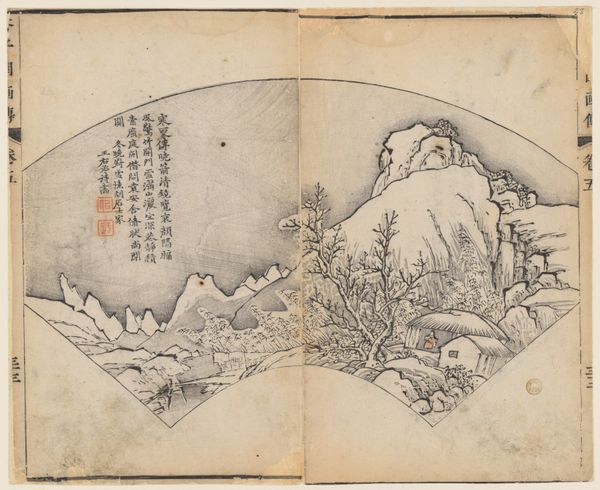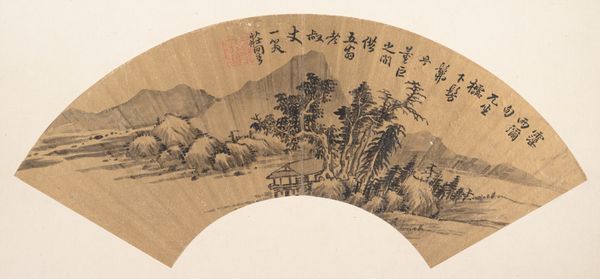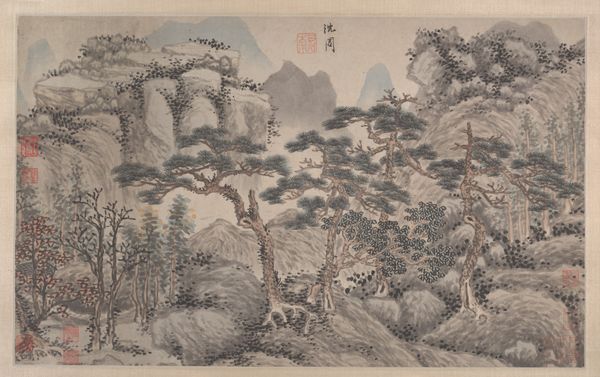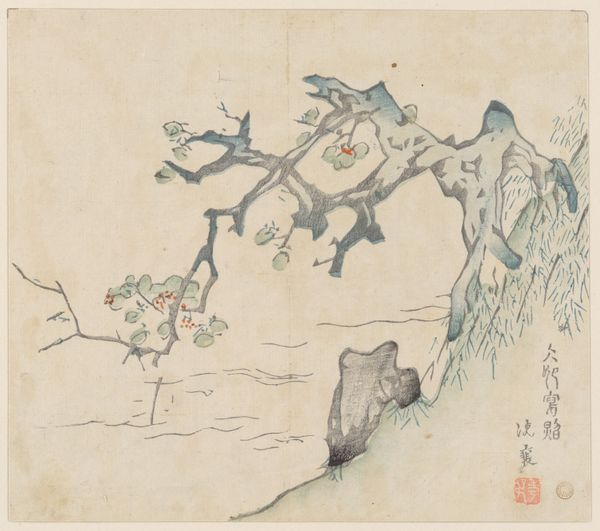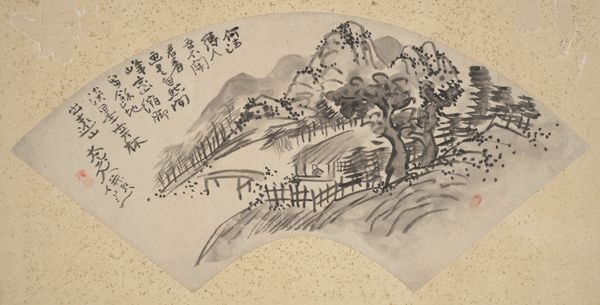
drawing, paper, watercolor, ink
#
drawing
#
asian-art
#
landscape
#
paper
#
watercolor
#
ink
Dimensions: Image: 10 x 13 3/4 in. (25.4 x 34.9 cm) Overall with mounting: 43 1/2 x 18 7/8 in. (110.5 x 47.9 cm) Overall with knobs: 43 1/2 x 21 1/8 in. (110.5 x 53.7 cm)
Copyright: Public Domain
Curator: Kim Su-gyu's *Rainy Landscape*, created sometime between 1767 and 1799, employs ink and watercolor on paper. It resides here, at the Metropolitan Museum of Art. What's your immediate response? Editor: Gloomy. Atmospheric, yes, but a definite somberness. The almost monochrome palette emphasizes the starkness of the landscape. Curator: That melancholy feeling you pick up is key. The landscape tradition often acts as a mirror to the soul. Notice how the small figures are dwarfed by the mountains, emphasizing humanity’s fleeting existence compared to the timelessness of nature. Editor: Interesting, especially considering how nature here is rendered through such controlled, almost repetitive brushstrokes. Does that control suggest an attempt to manage or order this inherent vastness, almost to psychologically tame the landscape? Curator: Perhaps, though traditionally in East Asian thought, this harmony between man and nature doesn’t necessarily demand taming. The figures carrying what seem like covered burdens uphill – might suggest hardship, and acceptance. Rain itself is loaded with symbolism - sorrow, cleansing, renewal. Editor: The compositional structure supports that sense of arduous journey: my eye is pulled from the lower left corner with the human figures up and into the dense forest. The higher structures almost resemble an awaiting haven from the rain. Is there some kind of traditional journey archetype here? Curator: The journey, literally and metaphorically, is indeed central. Landscape painting often represents an inner quest or spiritual pilgrimage. It is interesting the lack of sky gives a kind of spiritual intimacy and urgency as we focus on the earthly plane. Editor: Yes. Without the sky, one almost feels trapped by the heaviness of earth and foliage. I noticed a small red signature, like a bold mark over the subtle ink and watercolour wash, is this the Artist's signature? Curator: Exactly! Its function is much more significant, acting not only as confirmation of the painting but also adds layers of aesthetic meanings. Red ink, as you know, in some instances is linked to concepts of prosperity and fortune. In contrast with the rest of the composition's sombre effect, it brings this sense of spiritual well-being into the artwork. Editor: Thank you, these different viewpoints allowed me to reconsider my initial thoughts, making it a lot more enriching and profound! Curator: A great and profound observation, the exploration of its symbolistic, formal construction adds richness, inviting repeated contemplations.
Comments
No comments
Be the first to comment and join the conversation on the ultimate creative platform.
